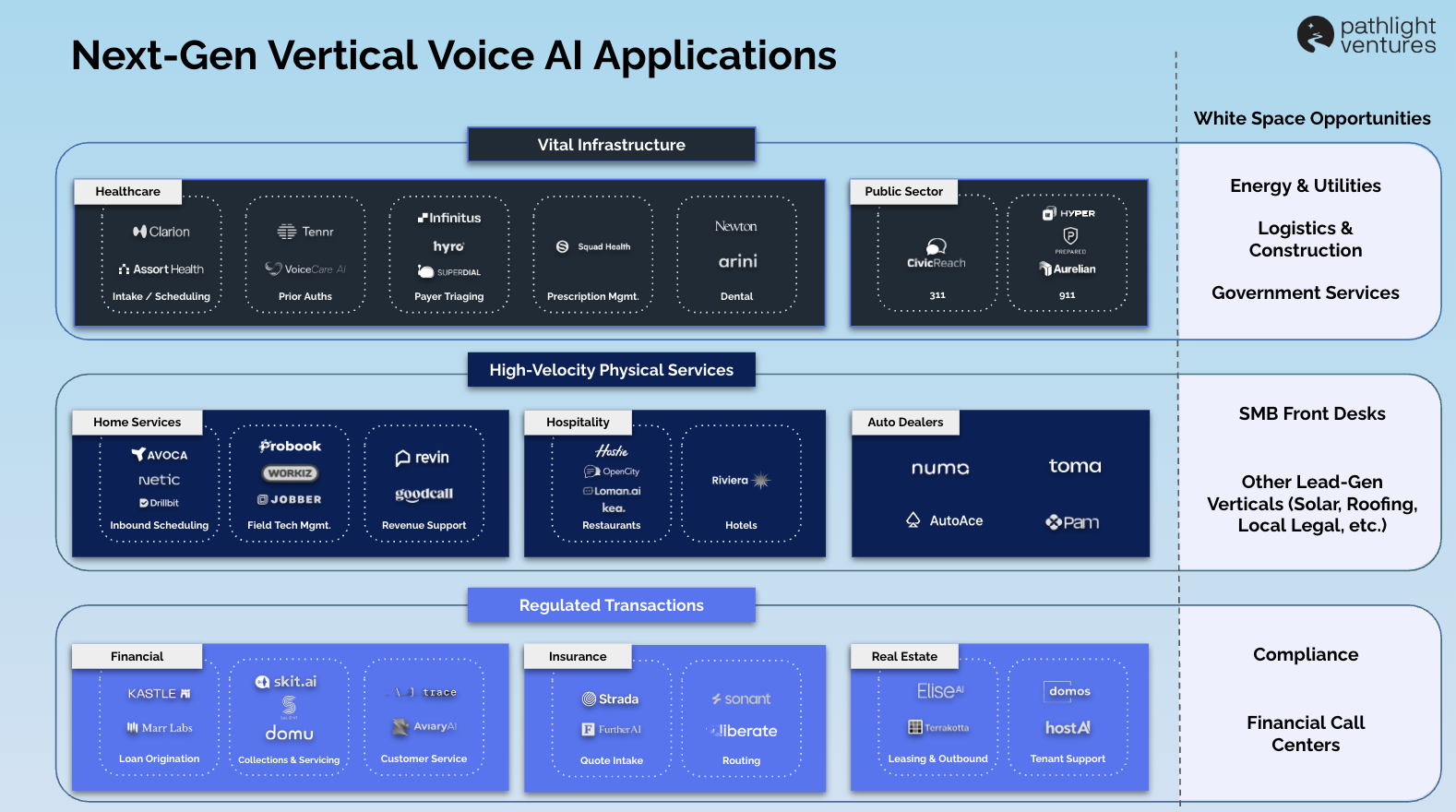There’s a growing gap between where voice AI has made the most noise, and where it’s quietly creating value.
Many of the early bets in voice focused on broad, generalized agents: AI concierges, synthetic sales reps, ambient assistants. But over the past year, the more notable traction seems to be happening elsewhere. Specifically: in high-stakes, verticalized, operational workflows where voice is at the core of the critical workflows. The future of voice will continue to be rooted in workflows that are transactional, messy, and deeply vertical. We’re seeing early signs that the companies that will break out can get the job done in the dirtiest corners of complex industries, where latency still costs real money.

Ping us if we missed you!
The most durable use cases for voice AI are surfacing in sectors where voice is the system of record. These are environments where critical operations still run on phones and where every minute on a call is a cost center.
In insurance, companies like Strada are automating inbound calls for quotes and servicing, freeing up licensed agents to focus on higher-value work. In the trades, platforms like Avoca and Netic turn messy scheduling and quoting calls into structured, AI-driven workflows. And in healthcare - where voice already dominates front desks, billing, and admin - companies like Assort and Squad Health are building deeply integrated agents that handle everything from patient intake to prior auths.
There’s also a broader universe of voice-native workflows still waiting to be touched. In sectors like utilities dispatch, heavy equipment parts ordering, and 311 intake, the phone is still the operating system. These are high-friction, high-volume, high-stakes environments where a single call can reroute a technician, delay a shipment, or escalate a safety issue. As models improve and voice AI becomes increasingly mainstream, we expect to see a new wave of verticalized voice platforms.
We’ve consistently seen a few patterns and similarities across voice products that show strong momentum:
Across the strongest teams, we’ve seen a consistent arc: They start narrow (usually with intake) and gradually earn the right to move deeper into the stack. That often looks like:
Over time, these products stop being “the voice layer” and become a core part of the operating system inside a company’s operational workflows.
In these cases, models can steadily improve with every call, accumulating domain-specific context that make them meaningfully smarter and more accurate than general-purpose tools. And the products that do this best don’t go to market alone - they embed inside the software their customers already live in, unlocking distribution through existing systems of record.
This isn’t to say every winning voice AI product must follow this path. But for now, the clearest traction seems to come from replacing workflows that already rely on voice - and making them faster, cheaper, and more scalable.
Voice doesn’t need to sound magical, but it does need to get the job done.